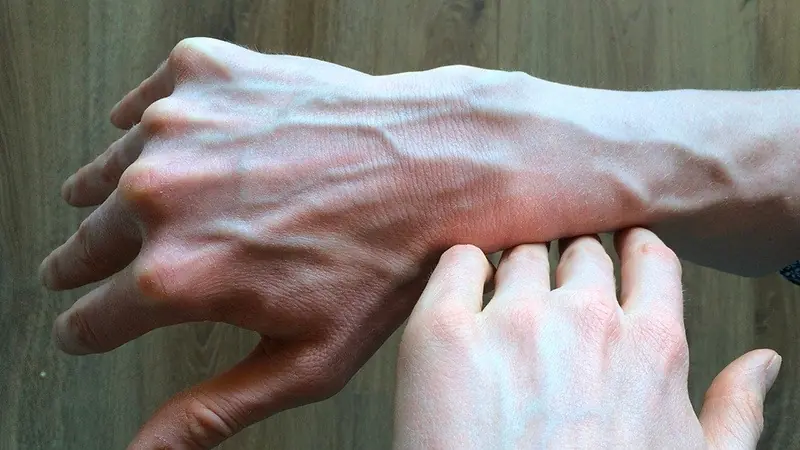Your hotel phone rings at 11:30 PM with nature’s most spectacular announcement. In Iceland, some hotels offer a service that transforms midnight disruptions into once-in-a-lifetime experiences. A small black button on your room phone connects you to one of hospitality’s most extraordinary wake-up calls.
Staff members monitor Iceland’s unpredictable skies throughout the night, ready to alert sleeping guests when the northern lights dance across the darkness. Hotels take this service seriously if you miss the initial phone call, staff will knock on your door to ensure you don’t sleep through the show.
How Auroras Light Up Our Skies

Auroras are mesmerizing light displays that shimmer in the night sky. You might know them as the Northern Lights (Aurora Borealis) or the Southern Lights (Aurora Australis). Imagine colorful ribbons, curtains, or rays of light dancing above, creating a truly spectacular sight. People often see these natural wonders near Earth’s polar regions.
Auroras begin their journey at our Sun. Our star constantly emits a stream of charged particles, primarily electrons and protons. Scientists refer to this flow as the solar wind. Earth possesses a magnetic field, acting much like an invisible shield. Our planet’s magnetic field deflects most of these particles. Some particles, however, get guided by the magnetic field towards the North and South poles.
Solar particles travel at high speeds toward our planet. Upon reaching Earth, they enter the upper atmosphere. They collide with gas atoms and molecules, mostly oxygen and nitrogen. These collisions transfer energy to the atmospheric gases, causing them to become excited. To return to their normal state, these atoms release the extra energy. They emit this energy as tiny flashes of light, called photons. When billions of these flashes happen together, we see the beautiful, moving lights of an aurora.
Auroral colors depend on which gas particles collide and at what altitude these collisions occur.
- Green: Oxygen atoms typically produce green light, the most common color of visible light. You see this phenomenon when particles collide with oxygen at altitudes of approximately 100 to 240 kilometers.
- Red: Oxygen atoms at altitudes much higher than 240 kilometers can glow red. Red auroras are less common and typically appear during periods of intense solar activity.
- Blue and Purple: Nitrogen particles are responsible for blue and purple hues. These colors often appear at lower altitudes (below 100 kilometers) and signal strong solar activity.
Auroras occur in large rings, known as auroral ovals, centered over Earth’s magnetic poles. Your chances of witnessing an aurora increase significantly in high-latitude regions. For the Northern Lights, top destinations include Alaska, northern Canada, Iceland, Greenland, Norway, Sweden, and Finland. Antarctica is the primary location for viewing the Southern Lights, although they can sometimes be visible from New Zealand or southern Australia during particularly strong events.
How Iceland’s Aurora Wake-Up Service Actually Works

Guests press a button daily to join the wake-up call list. Night staff become amateur meteorologists, monitoring sky conditions and solar activity forecasts to determine optimal viewing moments. When auroras appear, phones ring throughout the hotel, followed by personal door visits for guests who don’t answer.
“If a guest does not pick up the phone for the wake-up call, we do go and knock on the door to make sure they do not miss the lights,” explains Eyrún Aníta Gylfadóttir, marketing manager at Hotel Rangá.
Timing remains unpredictable. Lights might fade between the initial sighting and when guests reach the viewing area. Sometimes displays last seconds, sometimes hours – staff never know the duration.
Two Hotels Leading Aurora Hospitality
Hotel Rangá sits in a remote area of southern Iceland, strategically positioned to maximize viewing opportunities. Guests can book four-night “Age of Aurora” packages designed explicitly for aurora chasers. Standard room rates start at €303-€394 per night, with an average rate across all categories of €600 per night. Prices include breakfast and access to the geothermal hot tub.
Hotel Húsafell operates in western Iceland near Langjökull glacier, where clearer skies often provide better viewing conditions. “People can sign up at the reception for their individual rooms, and if the northern lights appear during the night, our night receptionist will call their room to let them know,” says Áslaug Ragnhildardóttir, groups coordinator at Hotel Húsafell.
Húsafell rates range from $308 to $875 per night, depending on room size and season, including breakfast and unlimited access to geothermal pools. Both hotels regularly offer low-season specials on their websites.




































